
SWJTU

中文
1. Institute of Astro-particle physics
Director: Dr. Siming Liu >>> Contact us
The Institute of Astro-particle physics was founded in 2020. Its history can be traced back to 1989 when, under the leadership of Professor Shanqing Jiao, the cosmic ray and astrophysics group of Southwest Jiaotong University joined the Tibet ASγ international collaboration and became one of the main construction members. A series of discoveries have been made by the ASγ experiment. Currently the group has 16 faculties, including 4 professors, 3 associated professors, and 9 assistant professors.
The Large High Altitude Air Shower Observatory (LHAASO) is a new generation air-shower experiment targeting at a deep investigation of the “High Energy Universe", and the construction of the whole observatory will be completed by the end of 2021. The Institute of Astro-particle physics is one of the key members of LHAASO, and will continuously play an important role in its operation and scientific discoveries.
Main research fields of this group include:
1. Cosmic ray physics with LHAASO experiment
The key science goal of LHAASO is to study astrophysical sources of cosmic rays, very high energy particles with energies as high as 1020 eV, which is 7 orders of magnitude larger than the maximum energy obtained in man-made accelerators. By using different detection techniques, it will measure the cosmic ray composition, spectra and anisotropy from a few TeV to a few EeV. The KM2A of LHAASO is also opening the ultra-high-energy (>100 TeV) gamma-ray window, which in combination with multiwavelength studies will help to understand the acceleration and transport of cosmic rays near their sources of origin and in the Milky Way galaxy.
(1) Cosmic ray spectral measurement
(2) Individual gamma ray sources
(3) Theoretical interpretation of LHAASO observations
2. Research on new detection technology and instrument
A series of detector and technology, related to cosmic ray, have been studied in our group during the past several years.
(1) the laser calibration system, which is used to calibrate the telescopes of LHAASO and monitor the air condition.
(2) weak signal detector. PMT and SiPM are studied for improving their performance.
(3) electromagnetic detector.
(4) the laser instruments. The parameters of laser are directly related to its application. Some methods are employed to control or improve their characteristics.
3. High energy astrophysics
(1) The high-energy gamma-ray emission from supernova remnants (SNRs) and pulsar wind nebulae (PWNe) based on LHAASO & Fermi observations
(2) The study of acceleration and escaping of cosmic rays in SNRs.
(3) The study of the transport process of cosmic rays in PWNe.
4. The correlations between cosmic rays and thunderstorm episodes
Thunderstorms are awe-inspiring phenomena, accompanying with fantastic lightning, heavy rains, strong winds and other disasters. So far, though much progress has been achieved, a coherent interpretation of all observations and a real understanding of the phenomena have not yet been achieved. The high altitude with frequent thunderstorms, made LHAASO suitable to study the correlations between cosmic rays and thunderstorm events. The following topics will be carried out:
(1) The characteristic of thunderstorm events at LHAASO observatory.
(2) The thunderstorm-related cosmic ray variations and the acceleration mechanisms of secondary charged particles caused by an atmospheric electric field.
(3) The correlation between lighting and cosmic rays; the possible process of lighting during thunderstorm weather.
5. Very high energy emission from GRBs
Gamma-ray bursts (GRBs) are one of the brightest explosions of gamma-rays observed so far, occurring at unpredictable times and random directions in the sky.
GRB detection is one of the major goals for LHAASO. The GRB search by WCDA will be carried out as followings:
(1) Perform a general search independent of the satellite GRBs data.
(2) Search for burst-like events coincident with the GRBs detected by satellite experiments.
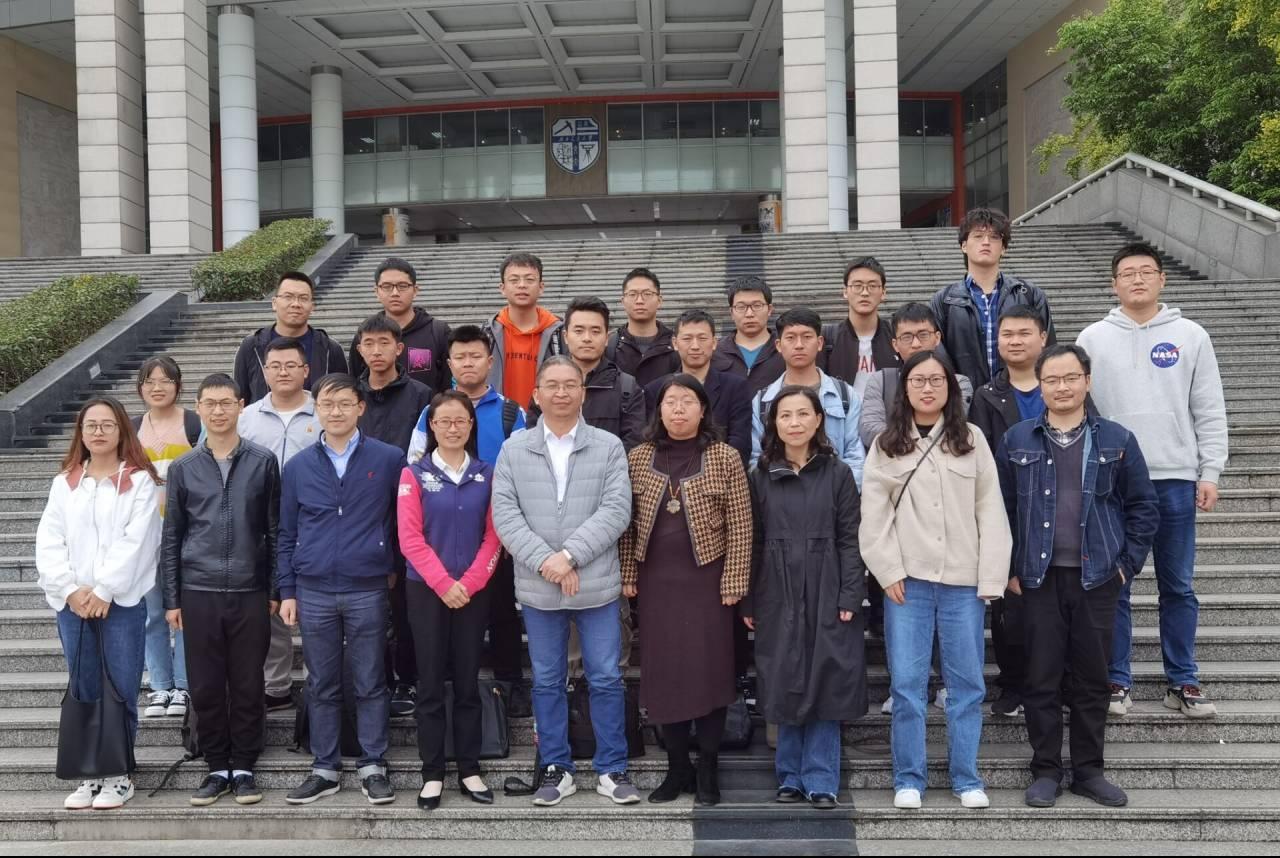
2. The Plasma Physics
Director: Dr. Yuhong Xu >>> Contact us
The Plasma Physics Team is devoted to the study of controlled magnetic confinement fusion. The team, based mainly on the Institute of Fusion Science (IFS), has signed a collaborative agreement in year 2017 with National Institute for Fusion Science (NIFS), Japan, to jointly construct the Chinese First Quasi-axisymmetry Stellarator (CFQS) in SWJTU, China. The IFS is the “Research Base of Magnetically Confined Plasma Physics and Engineering” approved by the “International Scientific and Technological Cooperation Base in Sichuan Province” in 2019. The IFS of SWJTU has also officially joined the International Energy Agency Stellarator/Heliotron Technology Collaboration Program (IEA SH-TCP) in 2020.
Currently, there are 10 permanent research fellows in the team, of whom 5 are Professors / Researchers and 2 are Associate Professors / Associate Researchers. The main academic leaders are Professor Yuhong Xu, an expert of the national high-level talents and Professor Changjian Tang, a distinguished professor of the university. Many young and middle-aged key academic staffs coming from home and abroad gradually grow up to be academic leaders and the entire team has strong spirits of innovation in scientific research and education for students.
While aimed at constructing and operating the CFQS device, the research work for the team covers a broad range from theoretical simulations and experimental studies, the development of diagnostics to investigation of fusion materials and engineering technologies. In the future, the team will be devoted to exploration of basic and novel physical subjects in magnetically confined fusion plasmas based on the advanced configuration of the CFQS device.
The team has a good ability to undertake domestic and international research programs, including the National Key R&D Program of China, National Platform Open Foundation Projects of China, and the National Natural Science Foundation of China-Major International (Regional) Joint Research Project. A lot of new and fruitful results have been achieved.
At present, the CFQS device is under construction and its operation will be the world’s first quasi-axisymmetric stellarator experiment, which definitely plays a leading role in the development of fusion science and also in deepening our understanding on 3D plasma physics. The team will therefore become one of the first-class research groups in magnetically confined plasma physics studies.

3. Quantum Opto-electronics Group
Director: Dr. Yiwen Wang >>>Details about our Group
Contact us: yiwenwang.nju@gmail.com
We are doing experimental and theoretical work on opto-electronic devices for quantum information applications. Our research mainly include: quantum information theory, superconducting circuits and quantum computing, single photon detection and precision measurement, quantum effects in the gravitational field, fiber optics and intelligent signal processing. We have state-of-the-art facilities for low noise measurements at ultra-low temperature and a clean room for chip micro-fabrication.
4. High Power Microwave Technology Research Team
Contact: Dr. Yongliang Tang
Our team mainly focuses on high power microwave technology, which includes the research fields of high power microwave antennas, sources and pulse power devices etc. The team currently has five members leaded by Prof. Qingxiang Liu and has undertaken more than 20 government sponsored research funds as well as 20 commercial research funds, the total funds exceed 10 million Yuan per year. Our team has also won two Second Prize of the Military Science and Technology Progress, published more than 100 research papers. The area of our laboratory is 2000 m2, the total equipment value is more than 10 million Yuan.
Current Research: Radio Physics, Electromagnetic Field and Microwave Technology, Physical Electronics, Condensed Matter Physics.
Email: tyl@swjtu.edu.cn


5. High Pressure Condensed Matter Physics
Contact: Qi-Jun Liu
Email:qijunliu@swjtu.edu.cn
The Key Laboratory (for Universities) of High Pressure Science and Technology of Southwest Jiaotong University in Sichuan Province originated from the Institute of High Temperature and High Pressure Physics jointly established by our university and the China Academy of Engineering Physics in 2001. Jing Fuqian, an academician of the Chinese Academy of Sciences, was the first director of the Institute. Under the leadership of the older generation of scientists such as Jing Fuqian and Hong Shiming, the Institute of High Temperature and High Pressure Physics has been devoting to the national strategic needs, focusing on the world's scientific and technological frontiers, and making major innovations with international influence in high pressure science since the foundation of the institute. The laboratory has become an important base of high level scientific research, academic exchanges and talent training, which engages in the research on the basic core issues of high pressure physics, continuously cultivates outstanding talents for the country, and focuses on the development of interdisciplinary theories. It has achieved the first-level in China and plays a leading role in the high-pressure physics community.
There are 10 researchers in the laboratory, including 5 with senior titles and 5 with intermediate titles, as well as 30 graduate students, many of whom have been rated as outstanding Communists, outstanding teachers, advanced individuals, etc. Over the years, the laboratory has devoted to the research fields of microscopic action and phase transition, mechanical and thermal coupling and metastable phase, dissipative relaxation and non-equilibrium evolution, group effect and mesoscopic, special functional material design and synthesis, etc, and achieved a number of high Level research results. It has successively undertaken scientific research projects such as major projects of the National Natural Science Foundation of China, general projects, joint projects, and equipment pre-research. At the same time, our laboratory has cooperated with foreign research units such as California Institute of Technology, University of Kansas, University of Twente, as well as domestic research institutions such as Chinese Academy of Engineering Physics, Chinese Academy of Sciences, Beijing Institute of technology and Sichuan University. A large number of high-pressure scientific and technical talents have been trained for the country, involving the national young experts, academic leaders of key disciplines in Henan Province, and young science and technology stars of Shaanxi.
The laboratory is now equipped with dynamic high-pressure experimental equipment, static high-pressure experimental equipment, and a small computer cluster system. Two sets of large dynamic high-pressure loading equipment are the 57 mm one-stage light gas gun/propellant pun and the 25mm two-stage light gas gun, with the projectile velocity ranging from 100 to 7000m/s. It is equipped with nanosecond resolution, the rapid spectral analysis system, radiation temperature measurement system, flow field velocity measurement system, and transient laser Raman system, which guarantees an advanced dynamic high-pressure experimental platform for the basic research of high-temperature and high-pressure condensed matter. It has obvious characteristics and advantages in pressure range and loading speed. The static high pressure laboratory has built a large-scale hydraulic equipment of 1500 tons of "multianvils press", and a 100 tons of fast pressurization equipment that is advanced in the world. The latter has the advantages of rapid shock wave loading and long-term pressure holding by hydraulic presses.
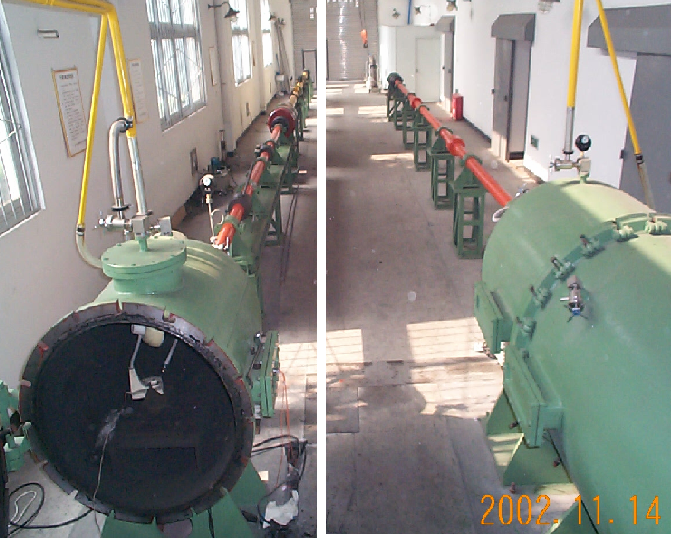
6. Photoelectric Engineering Institute of Southwest Jiaotong University & Nondestructive Testing Research Center of Southwest Jiaotong University
Contact>>>Dr. Jinlong Li
Photoelectric Engineering Institute, was established in 2001, with the main
research directions of photoelectric inspection, information processing technology and photonics. The Institute undertakes tasks such as scientific research, teaching for undergraduates and graduates, projects development and application, etc.. More than 190 graduates have been cultivated in the Institute, which has published more than Four hundred of papers on domestic and foreign periodicals.
Photoelectric Engineering Institute has already accomplished more than ten national projects, and nine science and technology development projects of the Ministry of Railways and hundreds of projects cooperating with railway bureaus. The Institute has been awarded eight prizes for scientific and technological progress from the Ministry of Railway and Sichuan Province's government, and five prizes from Chengdu government. The institute has obtained more than 80 patents including inventions and utility models.The Institute has made contributions to the development of rail transit detection technology in China.
Nondestructive Testing Research Center was established in 2009, consisting of 3 professors and 12 senior researchers. It has formed a research echelon composed of academic leaders, engineering managers and technical backbone.
Main Research Directions
→Advanced ultrasonic testing technology and theory research on Phased Array ultrasonic and optimized algorithm technique.
→Railway inspection of wheel sets and wheel axles, including ultrasonic testing method, analysis of testing data, defect recognition, diagnosis database and model.
→Construction and application research of NDT simulation platform for PA, UT and ET.
→Testing technology and methods for railway safety inspeetion, including NDT of body frame, welding and bolster.
→Other advanced NDT technologies, including Eddy Current Array, X-ray, EMAT, Laser ultrasonic technology and etc..
Joint Laboratory of Olympus NDT is mostly engaged in theoretical and applicable technology research on Nondestructive Testing. It was founded in 2010 by Nondestructive Testing Research Center of Southwest Jiaotong University and Olympus NDT Incorporation.The testing equipments of the Laboratory are provided by Olympus NDT Incorporation, SClead Science & Technology. Co., Ltd. and Southwest Jiaotong University.
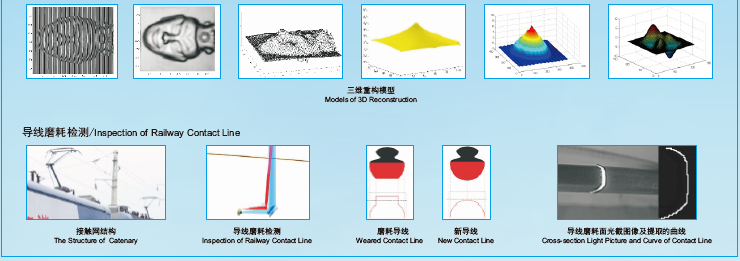
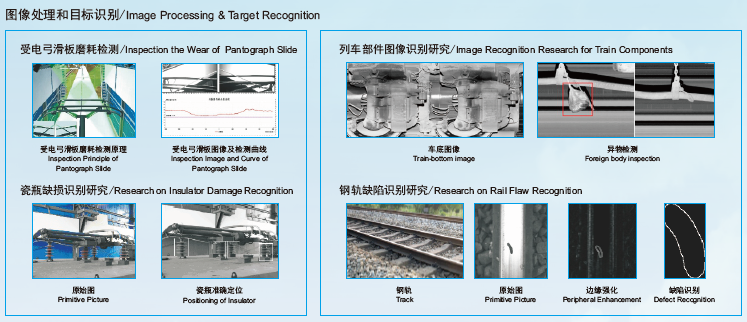
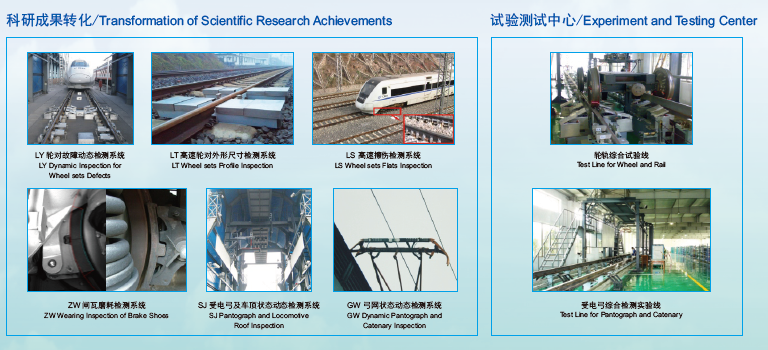
7. Nanomaterials and Computational Physics
Contact: Dr. Wenting Zhang
Email: zhangwt@swjtu.edu.cn
Our team mainly focuses on the preparation and growth mechanism exploration of thin film materials, nanomaterials and new energy materials, and further the design and functional application of new sensor devices. The team currently has a complete material and device preparation laboratory, as well as a high-performance computer server cluster. A number of research results have been made in the preparation of new functional materials, Raman spectroscopy surface enhancement, material structure and
performance prediction under extreme conditions, computer chip heat dissipation, thermoelectric material design, etc., and many high-quality research papers have been published.
Current Research: Atomic and Molecular Physics, Condensed Matter Physics.
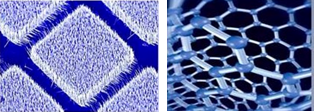
8. Antennas and Propagation Group (Institute of Electromagnetics, Southwest Jiaotong University)
Contact: Dr. Yuping Shang
Email: shangyuping530@sina.com
I. Introduction to Research Fundamentals
The Institute of Electromagnetics, which is affiliated with Southwest Jiaotong University, has devoted itself to the research of computational electromagnetics algorithms and its applications for decades, and has successively proposed or improved the Thompson-FDTD algorithm, the time-domain MEI method, the fast algorithm of long-range radio wave propagation, and the multi-layer fast multipole multi-target scattering Algorithm, hybrid algorithm of FDTD and transmission line equation, electromagnetic modeling technology of large area complex environment, efficient parabolic equation algorithm, field-line coupling algorithm, etc. A relatively deep accumulation of computational electromagnetics research work is achieved. In recent years, the national-level projects undertaken by the Institute of Electromagnetics include: National Natural Science Foundation of China, National 973 Program, National 863 Program, National Natural Science Foundation of China and China Academy of Sciences Joint Fund Project, etc. More than 100 high-level journal papers in the field of computational electromagnetics have been published, dozens of patents have been authorized, and several computer software copyrights have been obtained.
II. Introduction to Application Fundamentals
The Institute of Electromagnetics has long insisted on both algorithms and applications, and has formed a computational electromagnetic algorithm application foundation centered on electromagnetic compatibility, radio wave propagation, and antenna design: (i) In terms of electromagnetic compatibility, the focus is on the fast calculation method of cable electromagnetic coupling near the ground and the research on the algorithm of electromagnetic interference of transmission line network. (ii) In terms of radio wave propagation, work is focused on the modeling of complex geographic and meteorological environments in large areas and the efficient solution algorithm for radio wave propagation. (iii) In terms of antenna design, researches on the principle and design of planar wide-angle scanning phased array antennas, low-scattering antennas and electromagnetic scattering calculations, array analysis and synthesis, and so on, have been carried out.

9. The electromagnetic technologies and appliacation
Current Research:
Research on wideband *** of shipboard platform;
High-power and low-cost millimeter wave reflectarray phased antenna;
Demonstration of *** radiation system;
Research on key technology of HPM *** antenna;
Electromagnetic compatibility technology for rail transit vehicles;
Rail transit electromagnetic environment assessment;
Electromagnetic metamaterials for high-power microwave protection;
Rail Transit Electromagnetic Interference Rectification;
Development of electromagnetic compatibility equipment;
Intelligent monitoring technology;
electromagnetic compatibility;
High voltage technology.